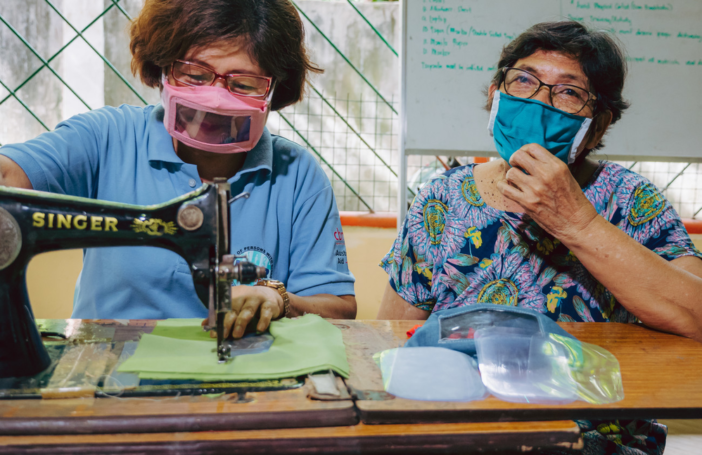In the first and second of these posts on aid communications, we looked at what has changed since the integration of AusAID into DFAT, and took a qualitative and quantitative look at some of these shifts.
In this final post, we’ll look at what other large aid agencies are doing to communicate their work, and point out some areas where DFAT’s communications could be quite easily improved.
How others do it
Communications from other countries’ aid agencies provide strong examples of how DFAT could improve its efforts. For example, when it comes to story-based content, it is easy to find good examples of explainer and case study content on the DFID homepage (which has many stories about DFID’s work). For example, this story illustrates a complicated concept – anticorruption programming – through case studies that can be clearly understood. DFID also blogs about its work, writes ‘NGO-style’ stories about how aid helps change the lives of recipients, and has a YouTube account with content that ranges from videos with pop music over the top of their Minister speaking about the SDGs, to real stories from recipients.
Among other initiatives, such as region-specific YouTube accounts, USAID has a print and online magazine with long-read features about its work and a monthly newsletter – its front page also showcases stories about aid successes.
Even other aid agencies that have been integrated into foreign affairs departments are making stronger efforts.
In New Zealand, where its aid agency was integrated into the Ministry for Foreign Affairs and Trade (MFAT) in 2009, the aid landing page is full of photographs and news stories, and in addition to institutional social media accounts, it promotes those of some of its individual aid staffers.
The social media accounts of Canada’s formerly independent aid agency weren’t deleted, but have continued as channels dedicated to development news. Its aid website has a ‘results and stories’ section in a prominent position, which includes ‘stories from the field’.
A publication compiled by members of the OECD Development Assistance Committee’s DevCom network in 2014 titled Good Practices in Development Communication provides many other examples – including highlighting some of the former AusAID’s work.
There’s lots of other good examples and inspiration out there, not only from aid agencies, but also from NGOs and multilaterals.
How to do more
Now that the dust has settled from the aid program’s 2013 integration, and the re-election of the Coalition government in July 2016 means there will likely be no major shake-ups to the aid program over the next three years, it would be an opportune time to strengthen communications within an aid program that is increasingly unlikely to be ‘un-integrated’.
There are a number of straightforward and practical changes that could be made to better communicate with the Australian public about aid.
- Start telling more stories about aid program successes in an accessible way, and diversify the content – there are many formats that can be utilised, such as short news stories, feature articles, explainer-type pieces, recipient stories, short videos, field work diaries, infographics and more. Consider a regular publication, such as a newsletter or online magazine, to ensure momentum for creating this content isn’t lost among other priorities.
- Add more photos and visual media to the DFAT website, particularly the aid landing page, and other communications outputs mentioned above, so that people can see aid in action, instead of just being swamped by text (see New Zealand, USAID and Canada’s websites to see how much pictures can help make sites more user-friendly).
- Improve the ratio of content about aid on the DFAT homepage and on DFAT’s social media accounts, including through various in-country accounts, or consider bringing back accounts on social media platforms that are just about Australian aid.
- Invest in communications professionals that have an understanding of aid and development issues and can communicate these issues in a clear way, and who can translate aid successes into stories. Reconsider the ‘embedded communications’ model that operated at AusAID, with communications professionals located within country teams – internal communications are also important when it comes to creating content and having people who know what achievements are being made within various teams and who have all project contacts will be able to help get the word out.
- Capitalise on content-makers who sit outside DFAT. It was clear from the analysis of website stories that much of the content on aid came from projects that had outreach requirements as part of their agreements (Australia Awards and Australian Volunteers being the biggest providers of content). For projects with these arrangements, capitalise on the content they produce. For those without, consider implementing communications requirements, or finding other ways to draw out content.
- Australian NGOs make significant investments in communications and development education opportunities (which often are closely entangled with communications and aim to explain aid and development issues in a way that is currently lacking from DFAT’s outputs) – the aid program should consider if there are ways to capitalise on this source of content about aid-funded projects, particularly considering the broader goodwill within the public for Australian NGOs.
- Engage with the communications efforts occurring around international campaigns, such as the Sustainable Development Goals.
- Ministerial support for aid communications should be encouraged. Both the Foreign Minister Julie Bishop and Minister for International Development and the Pacific Senator Concetta Fierravanti-Wells frequently share social media posts about their attendance at aid-related events or visits to the region – but this material often does not explain what Australian aid does or why their government supports development. Enlisting their assistance, and other leaders such as the Prime Minister, to disseminate and promote content on Australian aid results would be a significant boost to aid communication efforts.
- More engagement with mainstream media is needed – better website and social media content could inspire more positive content on aid in the media, reaching those who may not visit the DFAT website, but more proactive outreach and story-pitching to media outlets should be part of any serious attempt to communicate the aid program’s successes to the broader public.
- A transparency agenda and a communications agenda should go hand-in-hand, and the aid program should have both (Stephen Howes has already written on transparency issues). They feed into and support each other, are both important for public accountability, and consequentially should be developed in close collaboration.
It should not be too difficult for DFAT to at least return to the level of communication that was achieved by the late AusAID, and it is one area where that aid and diplomacy union that was sought from the AusAID-DFAT merger is a particularly mutually beneficial fit. But the goal should be to not just restore communications, but to do even better. If political decision-makers on all sides really support aid as much as they purport to, they should be proud of the aid program’s achievements, and they should want the public to be better informed about them.
Ashlee Betteridge is a Research Officer at the Development Policy Centre. This post is based on her policy brief ‘Communication post-integration: reloading Australia’s efforts’ [pdf]. Also see the first post and the second post in this series.






it’s great this conversation is opened up. i come from background of 25 years of communicating about aid (as a fundraiser).lessons learned:
1. don’t talk about aid, talk about people
2. ‘hero’ is not Australian Government or DFAT or formerly AusAID, it is ‘Australia’ or ‘Australian people’
3. go to where audience is ‘at’, not where we’d wish they would be
4. simple, emotional, first person
5. show problems ‘fixed’
6.. and be patient 🙂
Ashlee – Your arguments rest on the assumption that DFAT management cares about aid.
Thanks, Ash, for this great policy brief and blog series. As far as I can tell, DFAT (and other aid agencies) have almost nothing to lose and everything to gain from communicating more, and more openly, about what Australian aid does and the difference that it makes in people’s lives. I think your recommendation on increasing engagement mainstream media is a particularly important one; I imagine many of the people who go to the aid pages of the DFAT website or follow it on Twitter are already well-informed about Australian aid — the challenge is reaching the broader public.